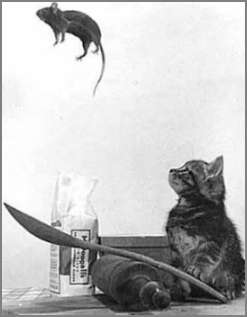Please Help Pets with a Small Gift of One Dollar
Feline Lower Urologic Syndrome FLUTD
By: Jane Bicks, D.V.M.
Feline lower urologic syndrome (FLUTD) is one of
the most common and painful cat ailments, sending
thousands of cats a year to veterinary hospitals and
probably an equal number of owners up the wall.
Ironically, while FLUTD is one of the most common cat health
problems, it is also one of the most preventable feline problems.
Symptoms of FLUTD
Characterized by frequent, strained voiding of small
quantities of odorous, often bloody, urine in locations other
than the litter box, FLUTD is essentially caused by the
presence of calculi in the urinary tract of the cat, where
they can promote obstruction, serious urethral irritation,
and dangerous blockage.
Avoiding and Treating FLUTD
* Feed a food that produces an acidic urine.
* Feed a diet low in magnesium and high in calories. The
greater a food's caloric density, the less a cat needs to
consume. Decrease magnesium intake, and thereby it's
presence in the urine.
* Keep the litter box clean and provide fresh water daily.
No hard water, please. It usually contains too much magnesium
for a cat's comfort.
* Free feed. This keeps the urine at the most consistent Ph.
* Be wary of supermarket/commercial "low ash" foods.
As is the residue of many minerals your cat needs. What you
want to know is the level of magnesium in that ash, which
your cat doesn't need. For prevention of calculi formation,
you want foods to contain less than .1% dry matter basis,
or about .02% of wet food.
* Feed only foods with high biological value protein (meat,
poultry, fish, eggs) that usually produce acidic urine. Other
proteins, such as soybean meal, wheat middlings, corn
gluten meal, and so on, generally do not produce acidic urine,
and they rank pretty low on my nutritional scale too.
* Encourage increased liquid intake. Sneak a tablespoon or
two of water, broth or tomato juice into all canned meals. If
necessary, and sodium is not restricted, you can probably
get your cat to drink without having to lead it to water,
by adding a pinch of salt to its food.
* Avoid high magnesium treats, such as shrimp, sardines
or nuts, and feed only foods that are acceptable for FLUTD
management.
* Don't add brewers yeast (0.17 percent magnesium) to
food if your cat has a FLUTD problem.
* Beware of food with many cereals that produce an
acidic urine. Too much acid is dangerous and it's often
added to change the urine Ph. The Ph should not be
less than 6.0. Call the manufacturer and ask what the
urine Ph is: they must supply you with that information.
* Give your cat chloreito (an herb), it's known to decrease
struvite formation. Since dosage varies with the product,
give 1/10 the adult dosage recommended on the package.
If your cat just can't seem to get into
eating it's food....

Then Kitty Deserves to try the
Carte du jour in Feline Cuisine
 America's
First Choice for Feline Cuisine
America's
First Choice for Feline Cuisine